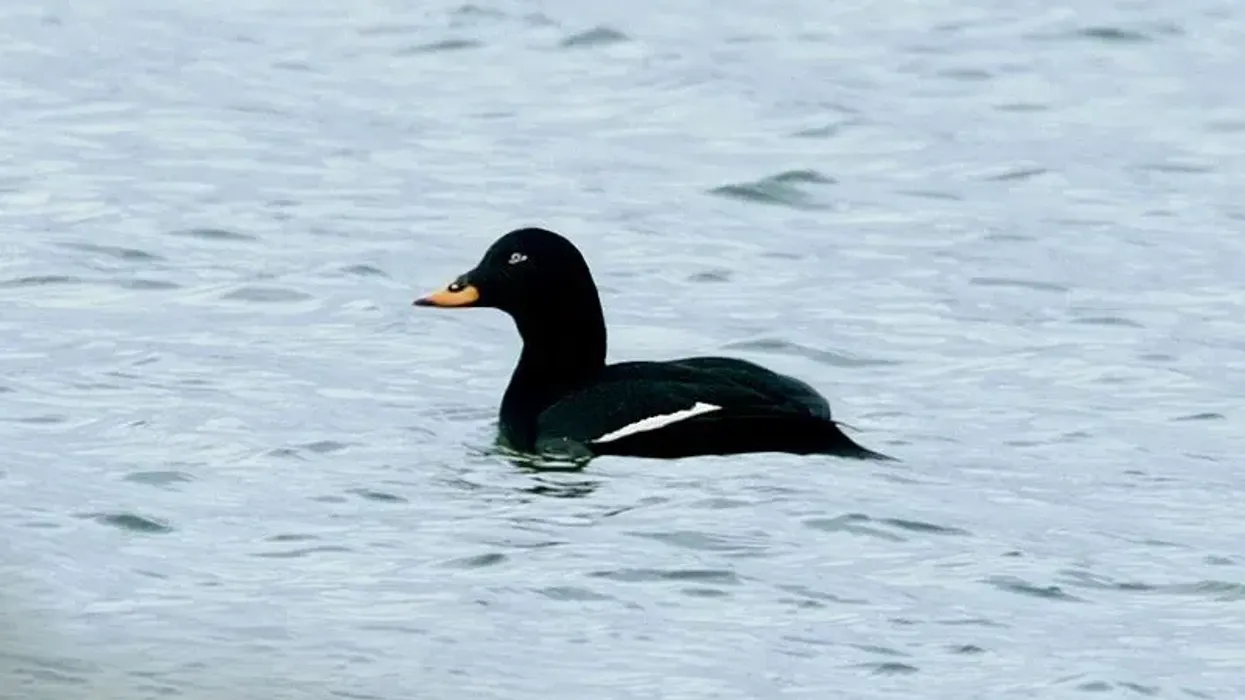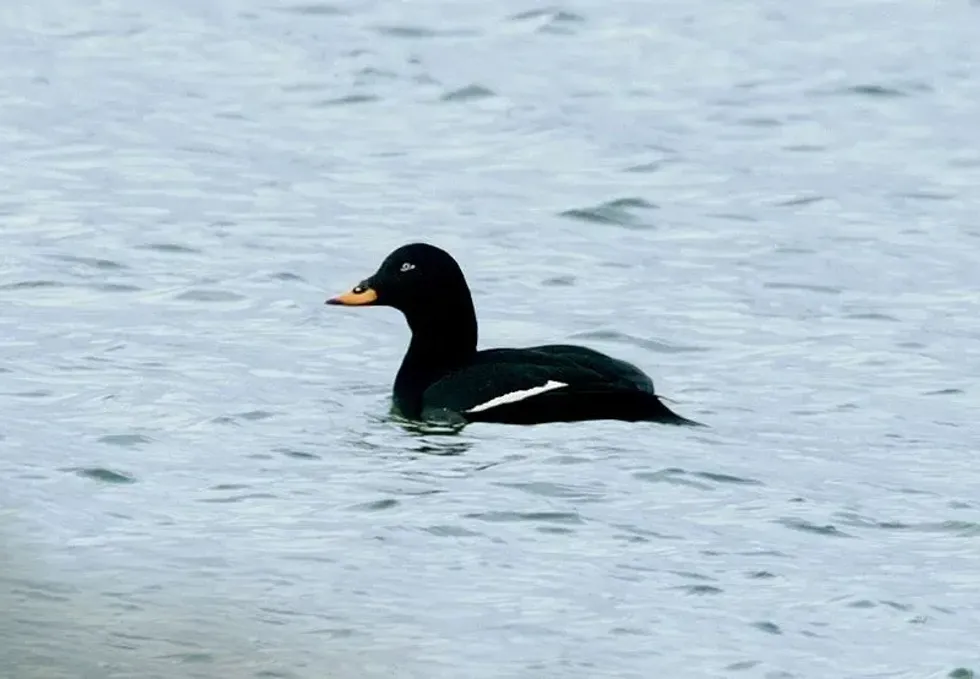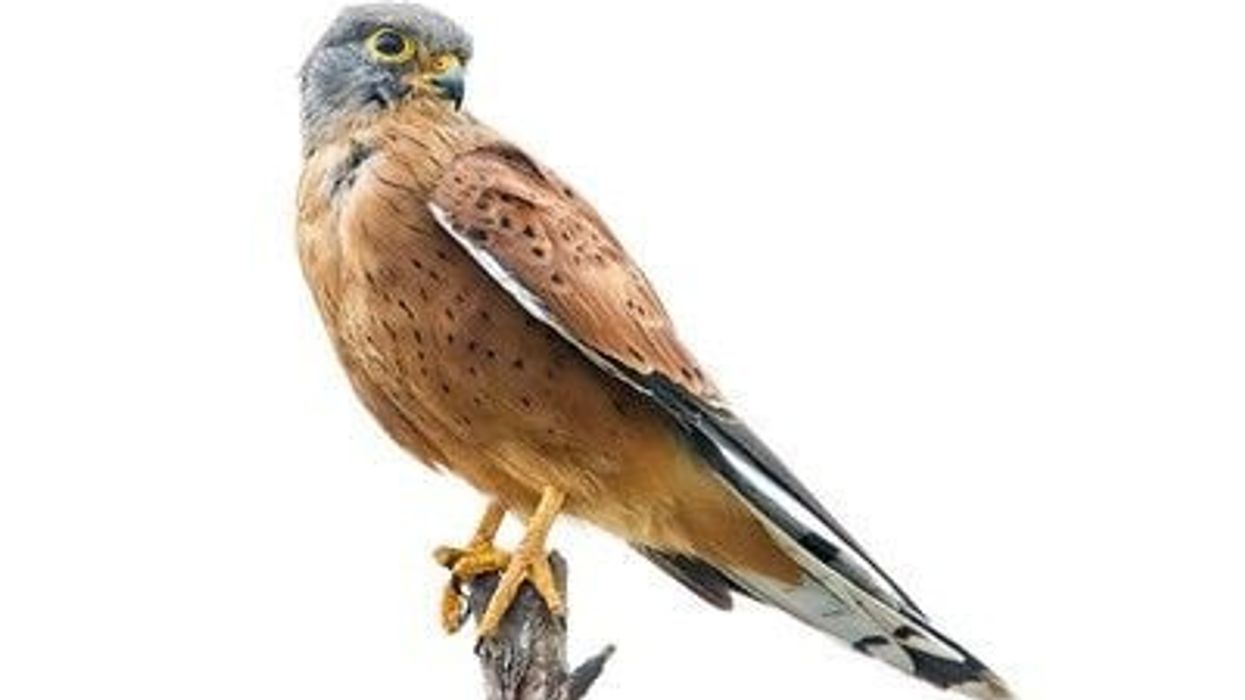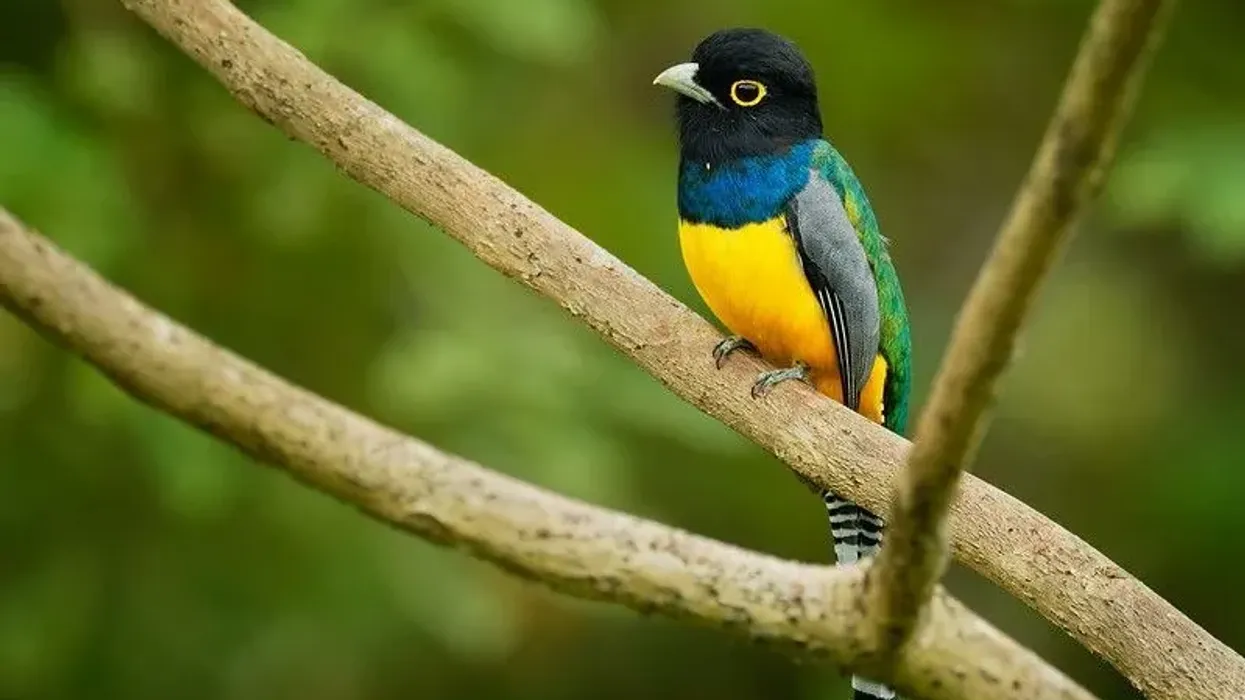Sea birds are another kind of beauty found in the wild. One such beautiful yet vulnerable species of duck called velvet scoter (Melanitta fusca).
With black-brown plumage and white patches on certain body parts and a white under eyeliner, a velvet scoter looks very royal. Native to Northern Europe, these ducks have a dusky brown appearance and have their names derived from Ancient Greek literature. Scientifically this bird species is known as Melanitta fusca).
This species draws its name from the Latin word 'fuscus' which translates to dusky brown. Read on for some of the most interesting facts about the velvet scoter. Afterward, do check our other articles on stork facts and common loon facts as well.
Velvet Scoter Interesting Facts
What type of animal is a velvet scoter?
A velvet scoter is a brown-black sea duck found in Europe. It has a dark royal plumage with multiple wing patches and a stout and bulky body. They are amazing birds mostly found in the sea waters foraging and looking after their young ones.
What class of animal does a velvet scoter belong to?
A velvet scoter is a bird, belonging to class Aves, of phylum Chordata in the kingdom Animalia. It further belongs to genus Melanitta or melas, the genus of sea ducks and family Anatidae, the bird family of waterfowls such as ducks and geese.
Geese are examples of the family background of velvet scoter resemblance black color. Geese are wild and such geese are fearless.
How many velvet scoters are there in the world?
These species of ducks are vulnerable to extinction. Their population nests size is between 141,000 to 268,000 for now. They are mostly found in European waters at birdlife international ecosystem.
Where does a velvet scoter live?
A velvet scoter is a winter visitor sea duck species containing a wing patch. It lives mostly in water, or the sea to be more specific. Velvet scoters are found breeding in western Europe, in Great Britain, in the Black Sea, Caspian Sea, and also in France and Spain.
What is a velvet scoter's habitat?
A velvet scoter bird is found mostly dwelling in the sea and lakes foraging. It builds its nests on the ground mostly near the sea and river. They also build their nest near the tundra region that matches them and in the woodlands.
Who do velvet scoters live with?
A velvet scoter in live small groups of its own kind. The adult and the juvenile ducks flock during foraging in groups of twenty or sometimes more velvet scoter birds.
How long does a velvet scoter live?
A velvet scoter bird may live for around 8-10 years on average. Scoters have a decent lifespan in the wild unless they encounter a predator.
How do they reproduce?
This velvet duck is a bird that reaches reproductive maturity after two years from its birth and reproduces once or twice every year in breeding grounds. In a clutch, a female bird lays around seven to nine eggs on average in their breeding grounds.
After courtship display and mating a female conceives and lays eggs. After hatching they stay back in the nest for 55 days at least and then later fly off on their own.
What is their conservation status?
This bird species of ducks fall under the Vulnerable category of the IUCN Red List. A rapid decline of rare birds has been seen since 2000 and they are protected by the agreement on the African-Eurasian Migratory Waterbirds Conservation Act.
Velvet Scoter Fun Facts
What do velvet scoters look like?

Melanitta fusca is a large size duck mostly found in North Europe. These ducks are beautiful in appearance with overall dark chocolate brown plumage and are famous birds. Except there is a linear white patch on its wing.
Their bill is yellow and at the top, there is a dark knot and the tip is pinkish. A distinguishing feature between a male and a female is the presence of two white patches on their face that are round in shape.
Because of their plumage, they are known as dusky brown ducks. The yellow bill shines with bright reflection from sunlight. The duck also shines like black gold.
How cute are they?
Even though they are large ducks, they are really cute. Especially because their eyes that have a white curve lining underneath that appears like an under eyeliner makes them look like royalty and hence spectators may find them even more beautiful.
How do they communicate?
The velvet scoter duck just like any other bird has a unique vocalization. Their vocabulary includes soft to loud calls. They may be heard quacking on various occasions, it is a hail call to notify other ducks. Besides they also coo, yodel, and grunt.
They also communicate during flight using their visual abilities. Another form of communication is during mating when a male attracts a female through a courtship display. This is a main velvet scoter identification.
How big is a velvet scoter?
A velvet scoter is almost the same size as a domestic duck. On average, the velvet scoter reaches a size of 20-23 in (53-58 cm) in length. They have a good wingspan of around 36.2-37.4 in (92-96 cm) and a stout body that makes them look bulkier.
How fast can a velvet scoter fly?
The velvet scoter is a good flyer and has a decent speed of flight. They may reach an average speed of 105 mph (170 kph) at a good height from the ground. During the flight, the decline in their speed may occur during landing on the ground.
How much does a velvet scoter weigh?
Even though the velvet scoter appears bulky and stout in appearance, they are lightweight beings. Hollow bones and plumage for the exoskeleton make them lighter in weight. An average adult velvet scoter may measure around 3-3.9 lb (1.4-1.8 kg).
What are the male and female names of the species?
It is quite uncommon for people to refer to male and female ducks by separate names but a male duck (velvet scoter) may be referred to as drake, especially in the European continent. But the female velvet scoter does not really have a separate name, hence is known as female velvet scoter.
What would you call a baby velvet scoter?
Since the velvet scoter is a duck, a baby duck is referred to as a duckling.
A duckling has a very light plumage and is very distinct in appearance from a mature velvet scoter After hatching it stays with the parent duck and is taken care of by both the parents till it is able to fend on its own.
What do they eat?
Velvet scoters are aquatic predators and hence feed on aquatic creatures such as mollusks, crustaceans, small fishes, insect larvae, and other small-sized aquatic arthropods. This indicates that they are entirely carnivores in the wild but they may also feed on bread crumbs and other leftover food like domestic ducks.
Are they poisonous?
They are not at all poisonous. The velvet scoter is a docile bird and may only harm when threatened. Neither are they poisonous nor is their flesh reported to be toxic.
Would they make a good pet?
These are wild ducks and are found living in the sea in Europe. This means that they need salt water for survival.
Providing them with similar conditions is a heavy task to deal with unless you are a pet enthusiast. Besides, they are well protected by certain wildlife acts since they are vulnerable species of birds. In conclusion, they are not fit to be taken as pets.
Did you know...
A very small isolated population of velvet ducks is seen breeding in Turkey.
There are two conspecific species of red velvet scoters. They are the Stehjnegr’s scoter or the white-winged scoter.
How high can they fly?
The velvet scoter is a sea duck and has a very long wingspan and thus it can fly really high. On average, they fly at elevations of around 200-4,000 ft (61-1220 m).
Are they predators?
A velvet scoter is a predator since it preys on small aquatic animals but not a dangerous one like the big mammals that dwell in the wild or those that live in the sea. It preys on small aquatic crustaceans and aquatic worms, certain mollusks, and arthropods of the sea.
Here at Kidadl, we have carefully created lots of interesting family-friendly animal facts for everyone to discover! Learn more about some other birds from our crested duck facts and masked duck facts pages.
You can even occupy yourself at home by coloring in one of our free printable velvet scoter coloring pages.










